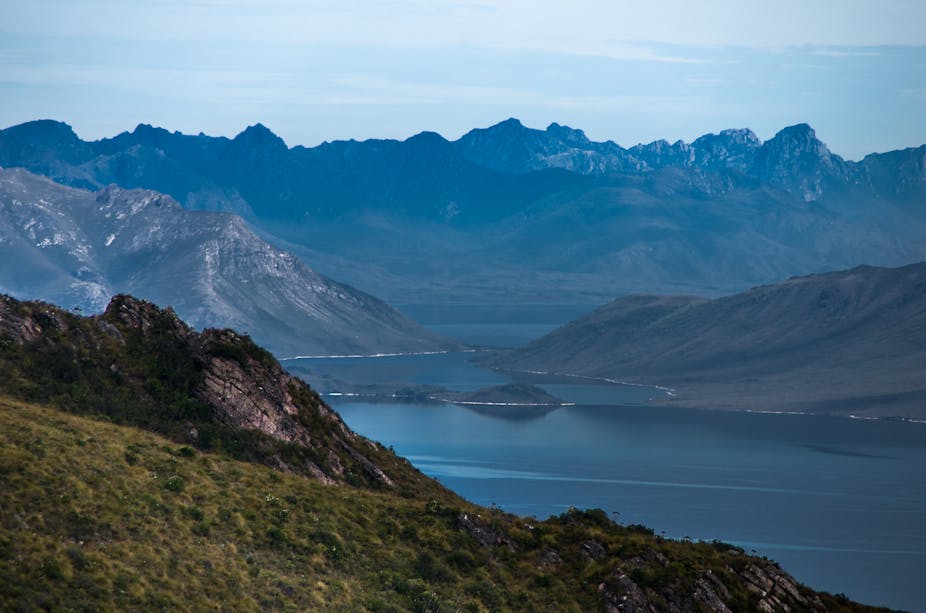The recent leaking of a new draft management plan for the Tasmanian Wilderness World Heritage Area (TWWHA) has prompted vigorous debate over the merits of tourism development in protected areas.
Specifically, the plan proposes to reclassify many “wilderness zones”, which were defined in the 1999 TWWHA Management Plan, into four “recreation zones” – effectively giving a potential green light to new tourism accommodation development to occur anywhere in the Tasmanian wilderness.
This is sacrilege to many conservationists, who believe that wilderness such as Tasmania’s forests should be left untouched and locked away from the masses, in order to preserve its qualities.
Is ‘locking it up’ really the solution?
Interestingly, the draft management plan proposes to scrap the word “wilderness” from the title of the TWWHA, as it is considered to be problematic for the Tasmanian Aboriginal people who have inhabited the region for millennia and regard the concept of wilderness as not compatible with “country” and their heritage within the World Heritage Area.

Why are we so frightened of non-Aboriginal people inhabiting the region in this modern age, particularly if they do it in a way that is sustainable? Could sustainable tourism act as an educational tool to create an even larger army of conservationists?
This begs the underlying question of whether sustainable tourism is a realistic possibility in a wilderness like Tasmania’s. Truly sustainable tourism development has to do lots of things at once: turn a profit, foster environmental protection, preserve the local cultures, and keep visitors satisfied. In a region such as the TWWHA, the preservation of natural values can be highly problematic, particularly as the environment is sensitive to issues such as erosion, denigration and the introduction of alien species and diseases such as dieback.
An opportunity to promote conservation
One of the requirements of the World Heritage Convention is that signatory countries have to increase knowledge of the unique values of the heritage region. One way to do this would be through sustainable tourism development. This, in turn, could create a new generation of conservationists and protectors, drawn from the ranks of tourists who might never previously have considered themselves environmentalists.
The method by which this could be achieved is called interpretation, in which guides teach visitors about the values of conserving the natural and cultural resources that they are visiting. Research suggests that at the very least, profound and meaningful environmental encounters can cause visitors to enhance their intentions and attitudes towards the environment. Whether these intentions turn into actual behavioural changes is less clear, but ongoing preliminary research suggests it is possible.

As well as changing tourists’ attitudes, another significant outcome of sustainable tourism development is revenue, which can be gained from permits and visitation. Currently, many protected areas around the world such as in Canada and the United States are under increasing pressure to cover running costs and generate a positive impact on regional and national economies. Increased tourism expenditure is a clear way to ensure viable protected areas.
How to do it properly
Although there is great potential for positive outcomes from tourism development in the TWWHA, it needs to be “fit for purpose”. Recent research shows that in some locations, stakeholders such as regulators, community groups, local residents and in some cases even tourism operators, are wary of future tourism development.
The research also suggests that large-scale tourism developments such as ecolodges are generally not widely supported within the southwest region of the TWWHA, including by existing tourists to the region. Moreover, many respondents believe that a one-size-fits-all approach to development is not appropriate. This means that different types of development will be needed at different locations – and in some areas it may not be appropriate at all.
Tasmania is a fragile, unique and increasingly well-known tourism destination. As a result of recent declines in the state’s economy and industries such as mining and forestry, tourism is now heralded as one of Tasmania’s great hopes to generate revenue and create jobs, as well as preserving the region’s natural beauty and culture.
But making sustainable tourism in the TWWHA a success will depend on non-tokenistic consultation of relevant before, during and after the tourism development takes place. The challenge for the state government lies in protecting the interests of this sensitive region, while facilitating a new breed of conservationists with a passion for enhancing this unique World Heritage Area.

